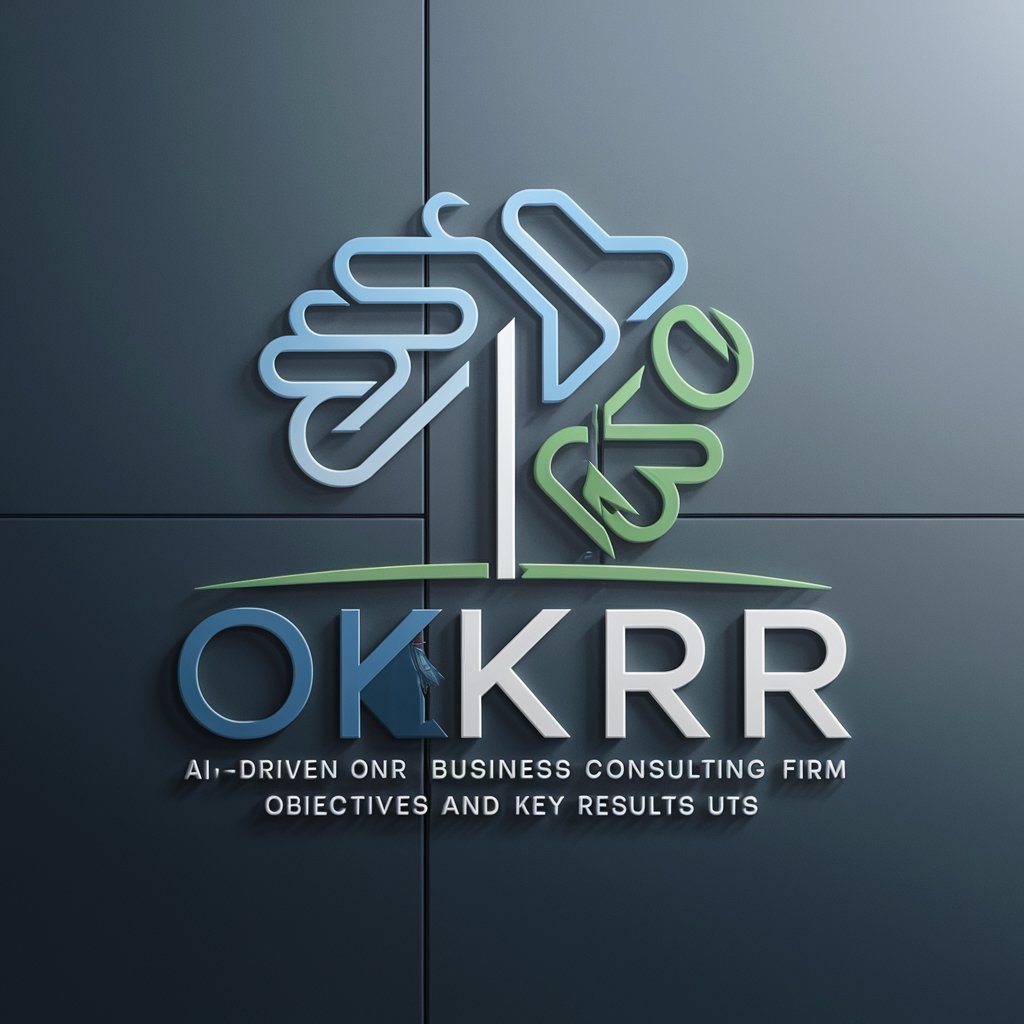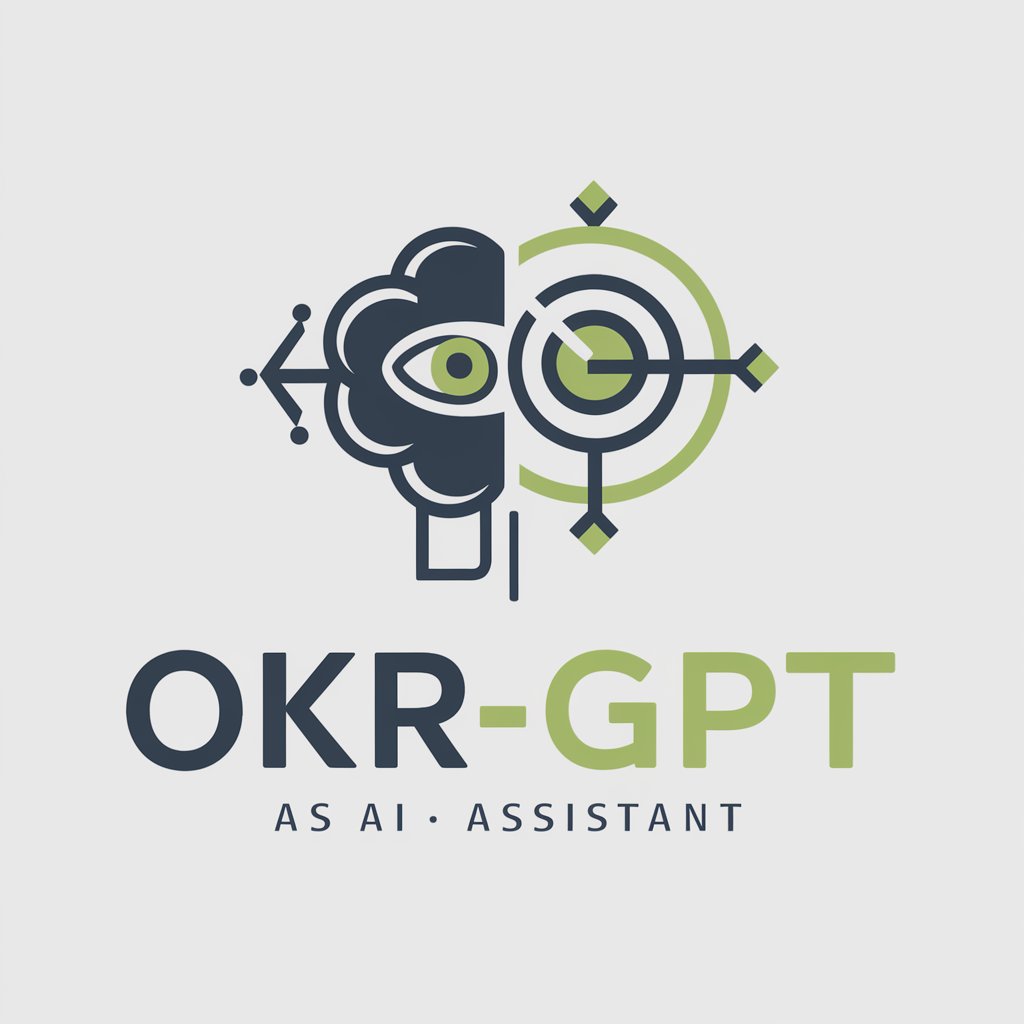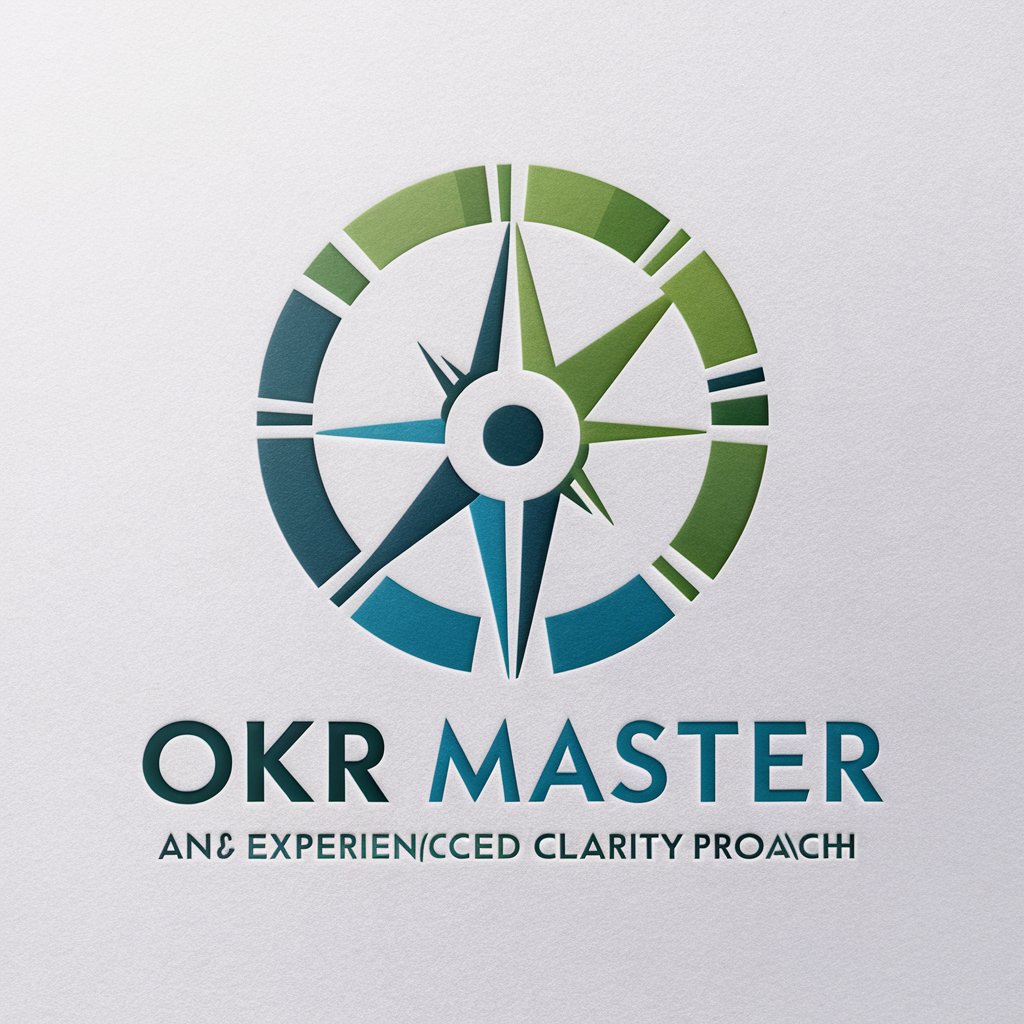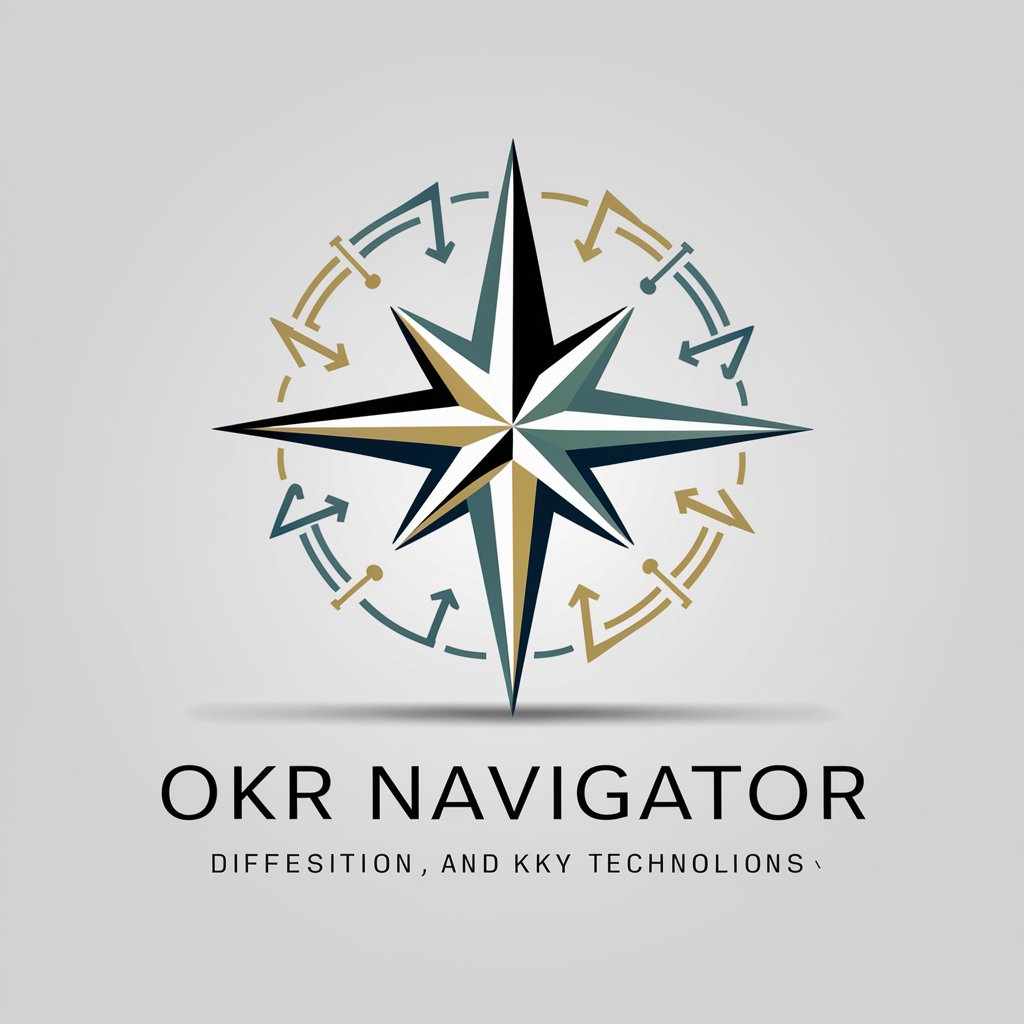
OKR for Startups and Scaleups - OKR Tool for Startups

Welcome to OKR for Startups and Scaleups!
Empower Growth with AI-Driven OKRs
Design an engaging OKR workshop...
Create an effective team alignment strategy...
Develop a clear and actionable OKR framework...
Outline the key steps to achieve measurable business goals...
Get Embed Code
Introduction to OKR for Startups and Scaleups
OKR (Objectives and Key Results) is a goal-setting framework designed to help startups and scaleups achieve focused growth by aligning company, team, and individual objectives with measurable results. It emphasizes setting ambitious, transparent goals to drive engagement and accountability across the organization. For example, a startup may use OKR to prioritize product-market fit, setting an objective to 'Achieve product-market fit' with key results like 'Conduct 100 user interviews' and 'Attain a 40% user retention rate'. Powered by ChatGPT-4o。

Main Functions of OKR for Startups and Scaleups
Strategic Alignment
Example
Aligning team efforts towards the company’s vision
Scenario
A scaleup aligns all departments towards entering a new market, with objectives like 'Expand into the Asian Market' and key results such as 'Secure 20 strategic partnerships' and 'Increase brand awareness by 30% in target regions'.
Focus and Prioritization
Example
Concentrating resources on high-impact initiatives
Scenario
A startup focuses on user growth, setting an objective 'Grow User Base' with key results like 'Acquire 10,000 new users' and 'Improve onboarding completion rate to 80%'.
Tracking and Measurement
Example
Measuring progress with specific, quantifiable outcomes
Scenario
A tech startup sets an objective to 'Improve Customer Satisfaction' with key results such as 'Achieve a Net Promoter Score (NPS) of 75' and 'Reduce customer support tickets by 25%'.
Ideal Users of OKR for Startups and Scaleups
Startups
Startups benefit from OKR by establishing clear, measurable goals that drive growth and innovation while maintaining agility in a fast-paced environment.
Scaleups
Scaleups use OKR to sustain growth, align expanding teams, and ensure that scaling efforts are directly tied to strategic objectives.
C-Level Executives
Executives utilize OKR to communicate the company's vision, drive strategic alignment, and foster a culture of accountability and transparency.
Mid-Managers
Mid-Managers leverage OKR to align their teams with company-wide objectives, prioritize efforts, and track progress towards key results.

Implementing OKR for Startups and Scaleups
Start Your OKR Journey
Initiate your exploration of OKRs by visiting yeschat.ai for a complimentary trial, granting immediate access without the necessity for a login or a subscription to ChatGPT Plus.
Identify Your North Star
Ensure you have a clear, unchanging North Star—your overarching goal that remains constant despite external changes. This includes having a well-communicated company vision, core values, and a mid-term strategy.
Craft Your OKRs
Develop OKRs that are specific, measurable, achievable, relevant, and time-bound (SMART). Start with a qualitative objective and support it with quantitative key results. Aim for 1-3 objectives per cycle to maintain focus.
Empower Your Team
Involve your team in the OKR process from the outset. Encourage a culture of ownership and accountability by allowing team members to contribute to both the setting and the execution of OKRs.
Review and Iterate
Regularly review your OKRs to monitor progress and learn from the outcomes. Use these insights to iterate and adjust your objectives and key results for the next cycle, fostering continuous improvement.
Try other advanced and practical GPTs
Consistent Style ✦
Crafting Art with AI-Powered Consistency

the Bitcoin Teacher
Empowering your Bitcoin education with AI

Data Visualization
Illuminate Your Data with AI-Powered Insights

Meeting Advisor
Making Meetings Matter with AI

Quantum Guide
Demystifying Quantum Computing with AI

Metro Maven
Revolutionizing Metro Efficiency with AI

TDH - Portfolio Strategy Mentor
Empowering Your Real Estate Strategy Journey

Astute Advisor
Empowering Your Financial Decisions with AI

Dimensional Image GPT
Visualize Dimensions, Unleash Creativity

Innovative Content Creator
Empowering creativity with AI

Wisdom Weaver
Harnessing AI to Bridge Ancient Wisdom with Modern Life

The Nameless
Unleashing Insights Through Ancient Wisdom

Frequently Asked Questions about OKR for Startups and Scaleups
How can OKRs drive alignment in startups?
OKRs foster alignment by clearly defining company objectives and key results, ensuring that every team member understands their role in achieving the overarching goals. This alignment is critical for startups where resources are limited and focus is paramount.
What are common pitfalls in implementing OKRs in scaleups?
Common pitfalls include setting too many objectives, failing to involve the entire team in the OKR process, attaching OKRs to individual performance evaluations, and not reviewing or iterating on OKRs regularly.
How often should OKRs be reviewed and updated?
OKRs should be reviewed regularly, typically every quarter, to ensure they remain relevant and aligned with company goals. Adjustments may be necessary to reflect changes in strategy or priorities.
Can OKRs be linked to individual performance reviews?
While OKRs are primarily a tool for strategic alignment and focus, they should not be directly linked to individual performance evaluations or compensation. Doing so can limit their effectiveness in promoting risk-taking and innovation.
How do OKRs support startup growth?
OKRs support startup growth by providing a framework for setting ambitious yet achievable goals, enabling teams to focus on high-impact activities, and fostering a culture of accountability and continuous improvement.





